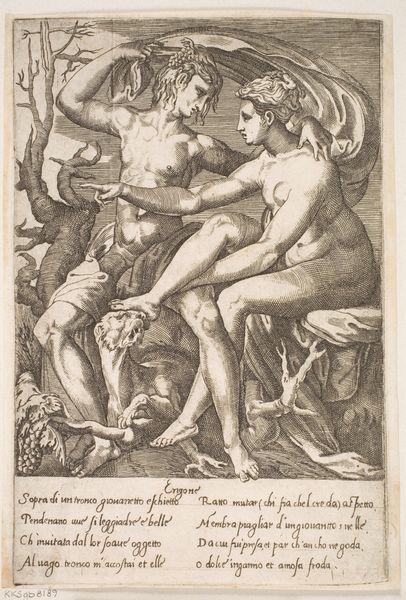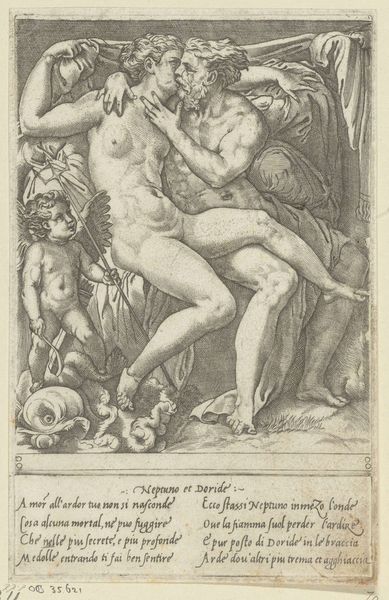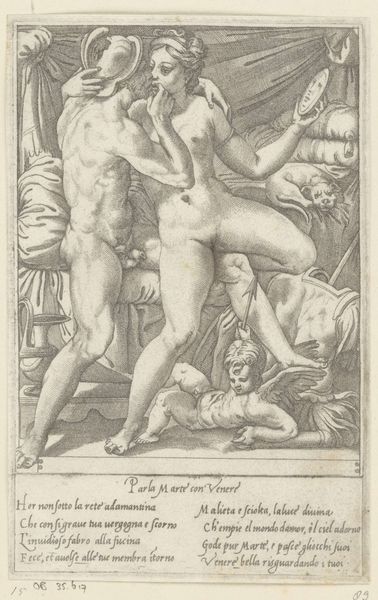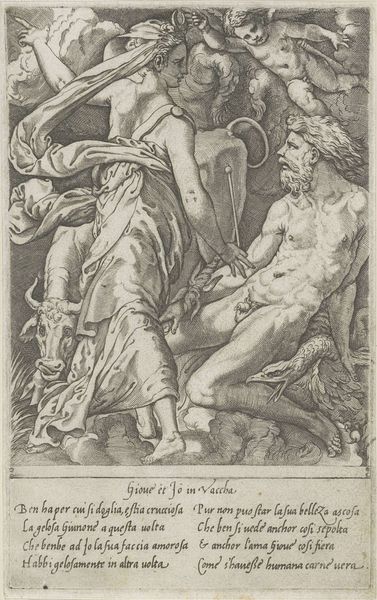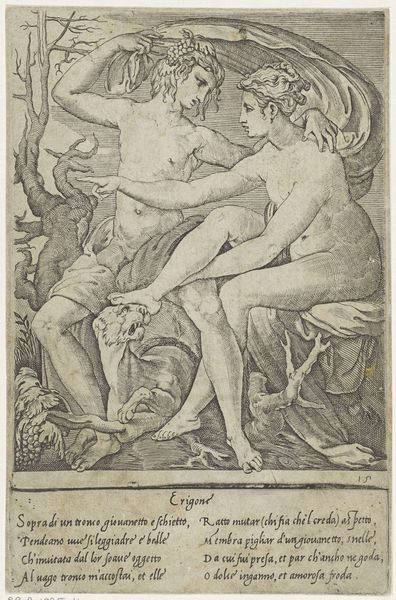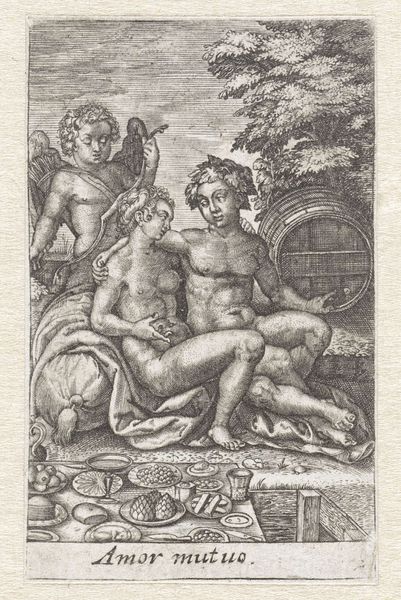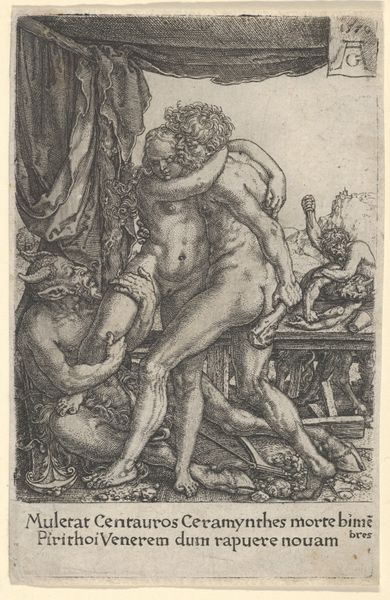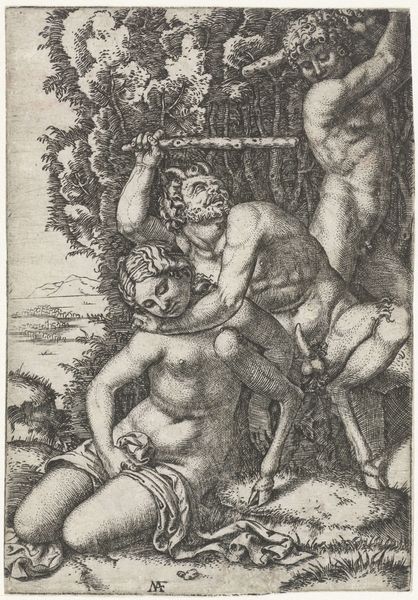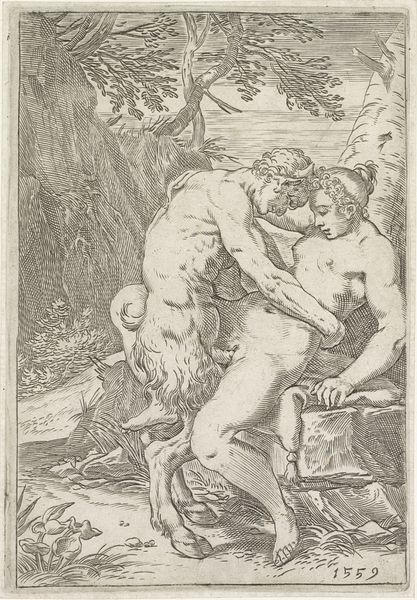
Loves of the Gods 1515 - 1565
print, engraving
#
allegory
# print
#
mannerism
#
figuration
#
history-painting
#
italian-renaissance
#
nude
#
engraving
Dimensions: height 215 mm, width 136 mm
Copyright: Rijks Museum: Open Domain
This print, Loves of the Gods, was made by Giovanni Jacopo Caraglio in the 16th century. It's an engraving, a process that demands intense skill and labor. To create this image, Caraglio would have used a tool called a burin to cut lines into a copper plate. Ink is then forced into these lines, and the plate is pressed onto paper. Look closely, and you can see the incredible detail achieved through this painstaking method. The figures emerge from the dense network of lines, a testament to the engraver’s command of the material. Engraving was a key technology for disseminating images at this time. Prints like this one allowed stories and artistic styles to spread across Europe. They also represent a sophisticated form of production, where the artist’s skill directly translates into a commodity. So, next time you see a print, remember the labor and expertise embedded within it. It is a perfect reminder that art and craft are intertwined.
Comments
No comments
Be the first to comment and join the conversation on the ultimate creative platform.
